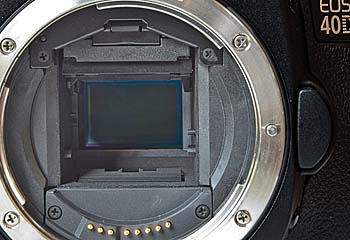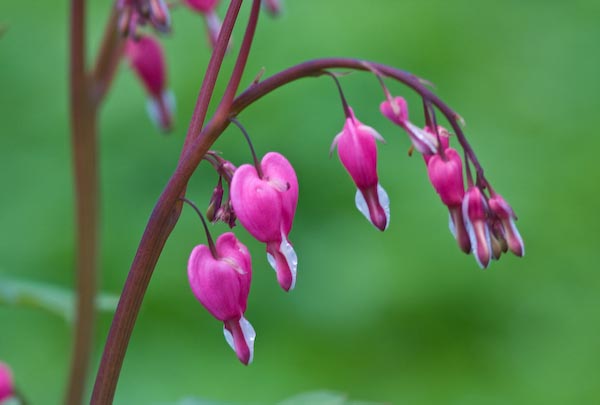
APS-sized sensors for wildlife are touted for their ability to extend the reach of telephoto lenses, making, in the case of APS-C (e.g. 1.6x multiplier for Canon 40D), a 300mm lens into a 480mm equivalent. This is a enormous asset for hard to reach wildlife, or for trailside flower photography when you can’t step off the path.
For a comparison with full-frame, I picked a backyard flower portrait. I matched subject size by photographing the flowers at 8 feet with a Canon 40D, and 5 feet with a full-frame 5D.

As the distance to subject changes, other factors besides sensor size come into play. For the same lens, the angle-of-view is narrower for APS format. A 300mm lens angle-of-view is (horizontal dimension) about 6° 50’ full-frame vs. 4° 16’ for 1.6x. If you’re trying to pin the subject against a pleasing background, the narrower-view APS can be an advantage. But another factor, depth-of-field, can override it. As you move closer to the subject, the depth-of-field—the plane of sharp focus—shrinks as well. Moving closer necessitates closer focusing, which concomitantly throws the background even more out of focus. We should always be looking for that pleasing background, and for floral portraits, this is huge.
The example of bleeding heart flowers against a dappled green (oxalis) illustrates the issues. I kept the subject size the same, shooting first with the APS-sized Canon 40D and then moving closer for a shot with the full-frame 5D. Comparing the two, background flowers, stems and the green oxalis are all more out of focus with full-frame. Tonal variation in the greens is much greater for the APS-C. Angle-of-view here is harder to see, but the darker tone in the upper left of the full-frame image is a result of capturing a bit of dark forest floor, a penalty in this case for its wider angle-of-view. If forced to choose, I find the full-frame shot more pleasing. It has bokeh∗—something to keep in mind for this season’s bloom.
∗Bokeh: The pleasing quality of out-of-focus areas of an image.
Gary